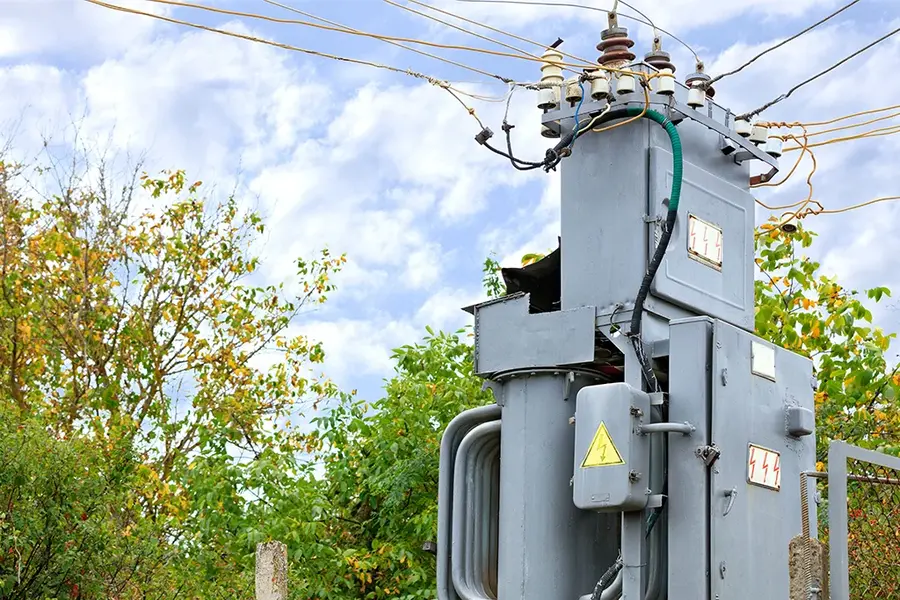The Importance of Current Transformers in Electrical Systems
The modern world is powered by electricity, yet its safe and efficient management necessitates accurate measurement and oversight. Directly measuring current in high-voltage systems can be risky and unfeasible. Current transformers (CTs) are useful in this situation. They are an essential part of power distribution, industrial applications, and energy management systems because they offer a precise and safe means of measuring electrical current.
A Current Transformer: What Is It?
One kind of instrument transformer used for measurement or monitoring is a current transformer, which lowers large currents to a controllable level. CTs generate a proportionate but lesser current that can be securely employed by meters, relays, and protective gear in place of directly attaching devices to high-voltage lines.
To put it simply, a CT serves as a mediator between the tools we use to monitor high-voltage electrical systems and those systems themselves. This guarantees precision and safety without subjecting technicians or delicate equipment to hazardous current levels.
The Significance of Present Transformers
- Security
Protecting people and equipment is one of CTs’ most crucial responsibilities. CTs enable engineers and operators to take readings without coming into contact with hazardous voltages by reducing big currents to smaller values.
- Precise Determination
Energy management, load monitoring, and billing all depend on precise current readings, which CTs guarantee. In large-scale systems, even a tiny measurement inaccuracy can have serious operational or financial repercussions.
- System Protection
CTs work in conjunction with protective relays to detect faults, overloads, or abnormal current flows. This allows systems to quickly isolate problem areas and prevent damage to equipment or infrastructure.
- Efficiency and Optimization
Accurate current measurement also helps optimize power usage. By analyzing current data, businesses and utilities can identify inefficiencies, balance loads, and reduce energy costs.
Applications of Current Transformers
Current transformers are found in a wide range of settings, including:
- Power generation plants: Monitoring output from generators.
- Transmission and distribution systems: Measuring current in high-voltage lines.
- Industrial facilities: Ensuring safe and efficient operation of heavy machinery.
- Commercial buildings: Tracking energy consumption for billing and efficiency.
- Protective systems: Detecting faults and triggering circuit breakers to prevent failures.
Whether in a massive power station or a small commercial setup, CTs play a behind-the-scenes role in keeping electricity reliable and safe.
Types of Current Transformers
CTs come in various designs, depending on the application:
- Wound CTs: Primary winding directly connected in series with the conductor.
- Toroidal CTs: No primary winding; the conductor passes through a circular core.
- Bar-type CTs: Use a bar as the primary winding, offering durability for high-current applications.
Each type has specific advantages depending on the system requirements, space constraints, and current levels involved.
Key Factors to Consider
When selecting a current transformer, several important factors come into play:
- Accuracy class: Determines how precise the CT is under certain conditions.
- Burden: The load connected to the CT’s secondary circuit, which can affect accuracy.
- Current ratio: The relationship between the primary and secondary currents.
- Insulation level: Ensures the CT can safely operate under the system’s voltage conditions.
- Size and installation method: Practical considerations for fitting CTs into panels or switchgear.
Engineers often rely on detailed 電流互感器規格 (current transformer specifications) to match the right CT to their system. Choosing the wrong CT can result in inaccurate readings, compromised safety, or even equipment damage.
The Future of Current Transformers
Like many components in the electrical industry, CTs are evolving with technology. Smart CTs are now being developed to integrate directly with digital monitoring systems. These devices provide real-time data, improved accuracy, and remote monitoring capabilities.
As the push for energy efficiency and renewable energy grows, CTs will continue to play a crucial role. They help utilities manage distributed energy resources, balance loads, and maintain grid stability. In a world where energy data is becoming just as valuable as energy itself, CTs are indispensable tools for the future.






